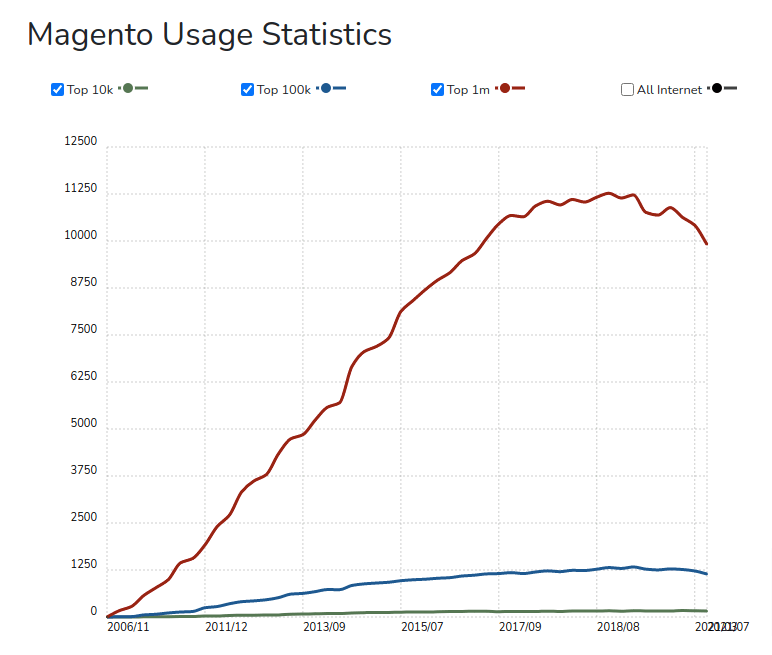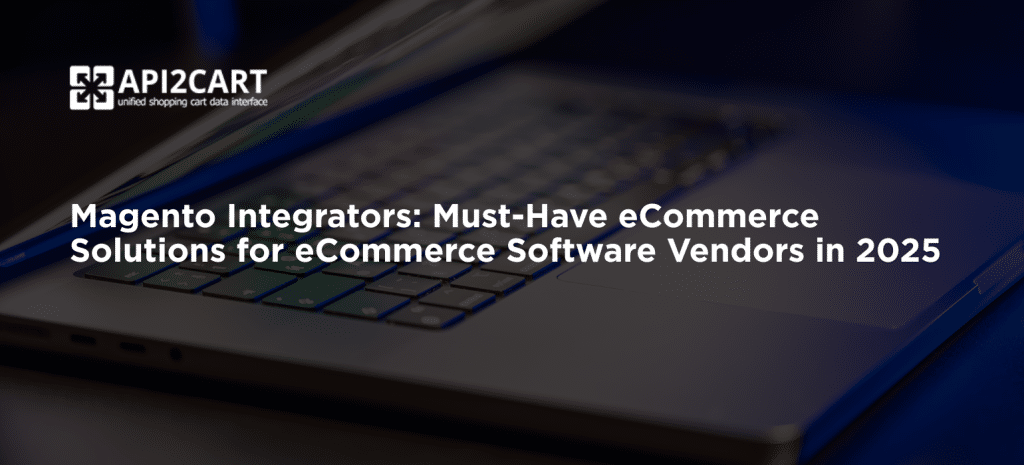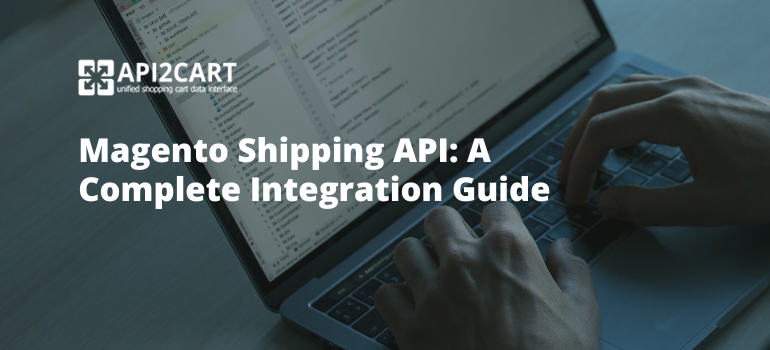
More and more software providers and developers are interested in building Magento integration in 2025. Access to customer data from Magento e-stores allows software owners to propose their solutions to clients using this popular platform.
Magento is one of the largest and most famous shopping cart solutions. It has withstood the test of time and competition, powering over 12% of all online stores worldwide. This amounts to 250,000 active users. Magento is downloaded approximately 5,000 times every day.
Connecting to Magento offers a variety of advantages. In this article, we explore these benefits and address some of the challenges associated with Magento integrations.
What is Magento Integration?
Magento integration involves linking software solutions like shipping management, order management, marketing automation, dropshipping automation, etc., with the Magento API. This enables seamless communication with the Magento system and provides access to essential data from Magento e-stores.
Magento is an intricate platform, developed on the Model View Controller (MVC) framework. It requires expertise in web programming and can be complex to work with, making it difficult for those without significant experience in enterprise frameworks like Zend or CakePHP.

Magento Integration via API2Cart
Explore how integrating with Magento can enhance your business’s competitive edge and customer experience.
Why Develop Magento Integration?
Magento remains one of the leading platforms, with a strong presence in regions like the United States (70,000+ stores), the United Kingdom (15,000+ live websites), and Germany (12,000+ sites). Magento's increasing popularity worldwide makes it an attractive platform for integration.

Integrating with Magento opens up new market opportunities. With access to critical data such as orders, products, and customer information, your software can perform key functions necessary for eCommerce operations.
However, Magento integration can be expensive and challenging. From finding the right developer to the extensive time and financial investment, it's clear that integration requires significant resources.
Let's explore why Magento integration can be a serious challenge and how to overcome it.
Developer Requirements
Experienced Magento developers are rare, and finding one for integration can be difficult. Developers familiar with frameworks like Zend or CakePHP are best suited for Magento, but even these developers face challenges. The integration process requires careful planning and expertise, often costing thousands of dollars per month.
Magento Anatomy
Unlike many other platforms, Magento uses an EAV (Entity-Attribute-Value) database model with over 40 tables for products and categories, making integration more complex. This complexity also leads to slower performance due to the complexity of SQL queries.
Another issue arises in the import process. Magento often requires additional steps during validation and can lead to errors during import.
Common Issues During Magento Integration
- Some objects may be returned in an incorrect format, requiring manual adjustments to ensure compatibility.
- When sending hash objects, special characters in the keys can create issues that require additional formatting.
- Magento's API documentation may be inaccurate, causing further difficulties when creating and managing products via the API.
- Reindexing processes in Magento often fail, leading to errors in product data and category reindexing.
How to Connect to Magento API Easily?
Despite these challenges, there is a simpler solution: API2Cart. By using API2Cart, you can integrate with Magento and other platforms quickly and easily. API2Cart simplifies the process by providing a unified API for multiple shopping carts, including Magento.
API2Cart provides over 100 API methods that enable easy management of Magento data, including products, orders, prices, and customers.
Summing Up
For software providers in areas like order management, shipping management, WMS, and ERP, Magento integration can be a costly and complex process. However, there’s a better solution. API2Cart simplifies integration by providing a unified API that connects you not only to Magento but also to over 60 other platforms and marketplaces.
API2Cart helps you save time and resources, providing easy access to platforms like BigCommerce, WooCommerce, Shopify, PrestaShop, 3dcart, Amazon, eBay, and more.

Start your integration with Magento and 60+ other eCommerce platforms today. Request your free 14-day trial and see how API2Cart can simplify your Magento API connection, save development time, and reduce integration costs.
FAQs
How does API2Cart reduce time and cost of Magento integration in 2025?
API2Cart lets you connect to Magento via a single unified API instead of building and maintaining a custom connector. You reuse standardized methods for products, orders, customers, inventory, and shipments, and you avoid chasing version changes. As a result, you ship the Magento integration in days, lower maintenance, and unlock coverage of 60+ other platforms from the same codebase.
Which Magento data and operations can my SaaS manage through API2Cart?
Core operations include retrieving, adding, and updating products, prices, stock, categories, orders, customers, and shipments.
You can sync order status and tracking, pull abandoned carts, and run bulk reads with pagination.
Webhooks like order.add and order.update support near real-time workflows without heavy polling.
What platforms offer integrations with Magento and other major carts?
API2Cart allows eCommerce software to integrate with Magento and other major 60+ eCommerce platforms and marketplaces, including Shopify, WooCommerce, BigCommerce, PrestaShop, Etsy, Wix, Temu, Shopee, TikTok Shop, and others, at once - all through a single integration. You can also access, manage and sync all valuable store data, such as orders, products, customers, inventory, shipments, and more, across different platforms, in real-time.



